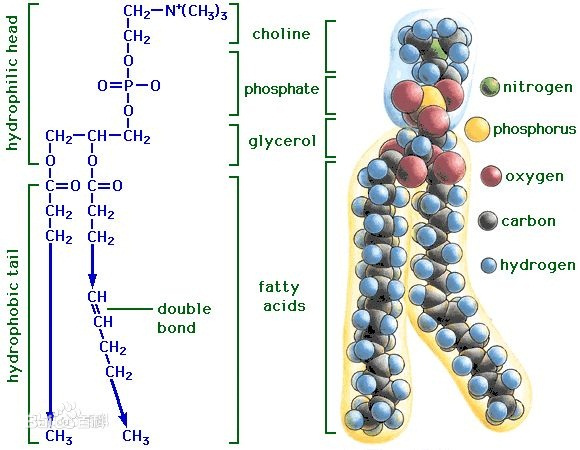Phospholipid product details
Time:2023-12-14
Phospholipids are a class of lipids that play a crucial role in the structure and function of cell membranes.It consist of a hydrophilic (water-attracting) head and two hydrophobic (water-repelling) tails.
The hydrophilic head contains a phosphate group and a glycerol molecule.The hydrophobic tails are typically fatty acid chains.
Phospholipids are a major component of cell membranes, forming a lipid bilayer that provides a barrier between the internal and external environments of cells.They contribute to the fluidity and flexibility of cell membranes.
Phospholipid including phosphatidylcholine, phosphatidylethanolaminephosphatidylinositol, phosphatidylserine, and many other species, phosphatidylcholine is found in soy and egg yolks; phosphatidylethanolamine is found in soy, liver and peanuts; phosphatidylinositol is present in cell membranes and is involved in cell signaling; phosphatidylserine is important for cell signaling and apoptosis.
Phospholipids can be obtained from various sources, including soybeans, sunflower seeds, egg yolks, and krill oil.
Phospholipids can be extracted from natural sources using methods such as solvent extraction or mechanical pressing. Purification processes are often employed to obtain high-purity phospholipids.
Phospholipids are used as emulsifiers and stabilizers in processed foods,utilized in drug delivery systems due to their amphipathic nature.Included in skincare products for their moisturizing properties. Used in supplements for their potential health benefits. Phospholipids have the ability to form emulsions by reducing the surface tension between water and lipids.
Some phospholipids, such as phosphatidylcholine, are associated with potential health benefits, including liver health and cognitive function.
Phospholipids used in food and pharmaceuticals are generally recognized as safe (GRAS) by regulatory authorities, such as the U.S. Food and Drug Administration (FDA).
Ongoing research explores the potential therapeutic applications of phospholipids in areas such as neurodegenerative diseases and cardiovascular health.
Specific details, such as composition, purity, and intended applications, can vary based on the type and source of phospholipid.If you are interested in a particular phospholipid product, it is recommended to refer to the product documentation provided by the manufacturer for detailed specifications.


 CN
CN





